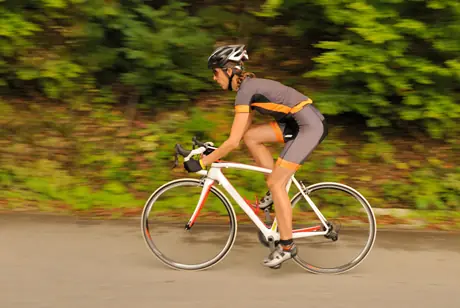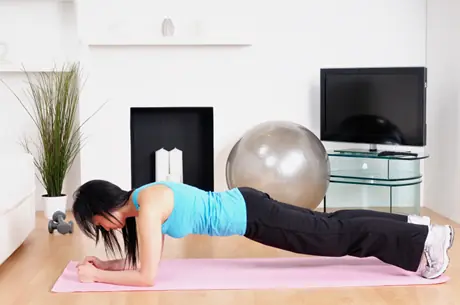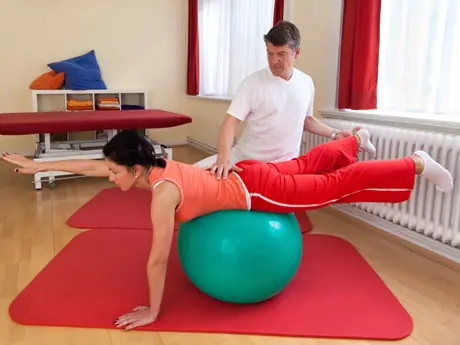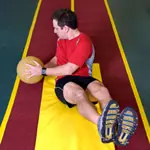
Sweat is like central AC for your body. On hot days or as you're grinding up a hill, glands under the skin produce sweat and send it to the surface, where it evaporates. Each drop that turns to vapor pulls heat away from your body, and you feel cooler. The hotter you get, the more you sweat.
On days when there's a lot of moisture in the air, sweat can't evaporate as quickly, making it harder for your body to cool off. This is why heat-related problems like cramps, exhaustion and heatstroke are more common in humid environments than in dry ones. Avoid these problems by learning how and when to hydrate.
More: Cracking the Code on Sweat Rates
Calculate Your Rate
A cyclist can shed two to three pounds an hour while riding hard. Each pound equals about 16 ounces of sweat. But the human body can't replace all of the fluid it loses, so aim to drink seven to 10 ounces every 10 to 20 minutes, depending on your hourly sweat rate. Use this formula below to calculate it.
- (Weight before an hour-long ride) — (Weight after this ride) = Weight lost.
- (Weight lost) X 16 = Ounces of sweat lost during ride.
- Ounces of sweat lost during ride + Ounces of fluids consumed during the ride = Sweat rate per hour.
More: Why Do You Sweat?
If Your Sweat...
Stinks: Your diet may be to blame. Caffeine stimulates sweat glands under your arms and in your scalp and groin, which secrete a fatty, odiferous sweat (learn the Truth About Caffeine). And if you eat a very low-carb diet, your body breaks down protein and fats, creating acetone, which is excreted through sweat and has a distinctive ammonia smell.
Pours: You're hydrated and working hard. Seasoned riders may not sweat more than cyclists who aren't as fit; but they're able to work harder and produce more sweat. In hot conditions, however, fitter athletes have greater sweating capacity, according to research published in The American Journal of Physiology.
More: What Does Your Sweat Taste Like?
Stains: You may be losing a lot of salt. Less-fit riders who aren't used to riding in heat shed more sodium than their fitter, heat-acclimatized counterparts. Choose a drink with 400 to 600 mg of sodium per serving.
Stops: You're not adequately replacing your fluid loss, says Penn State University sweat researcher Caroline Smith, PhD. Performance starts to plummet when you lose more than 2 percent of your body weight. This is a sign of heat exhaustion, when your core temperature can rise quickly, potentially leading to heatstroke. (Try This: 6 Cocktails That Won't Ruin Workout Results)
More: Cracking the Code on Hydration
 Ready to ride? Search for a cycling event.
Ready to ride? Search for a cycling event.Get ACTIVE on the Go


Couch to 5K®
The best way to get new runners off the couch and across the finish line of their first 5K.
Available for iOS | Android







Discuss This Article